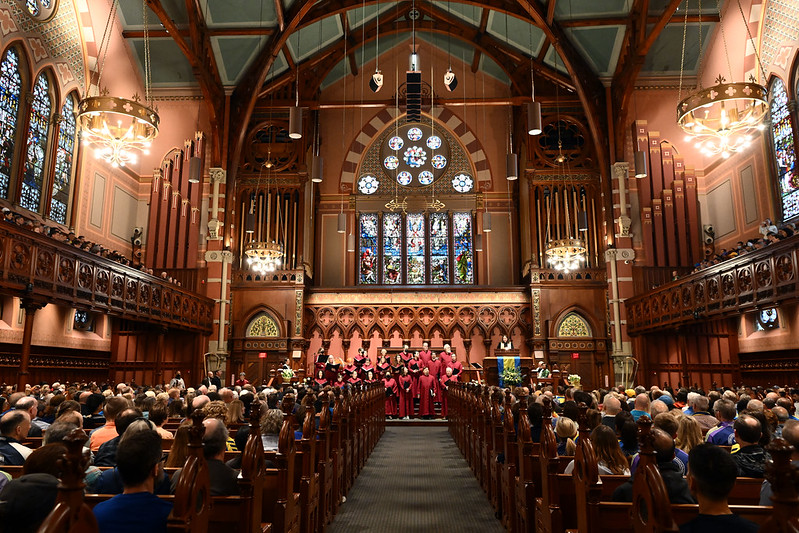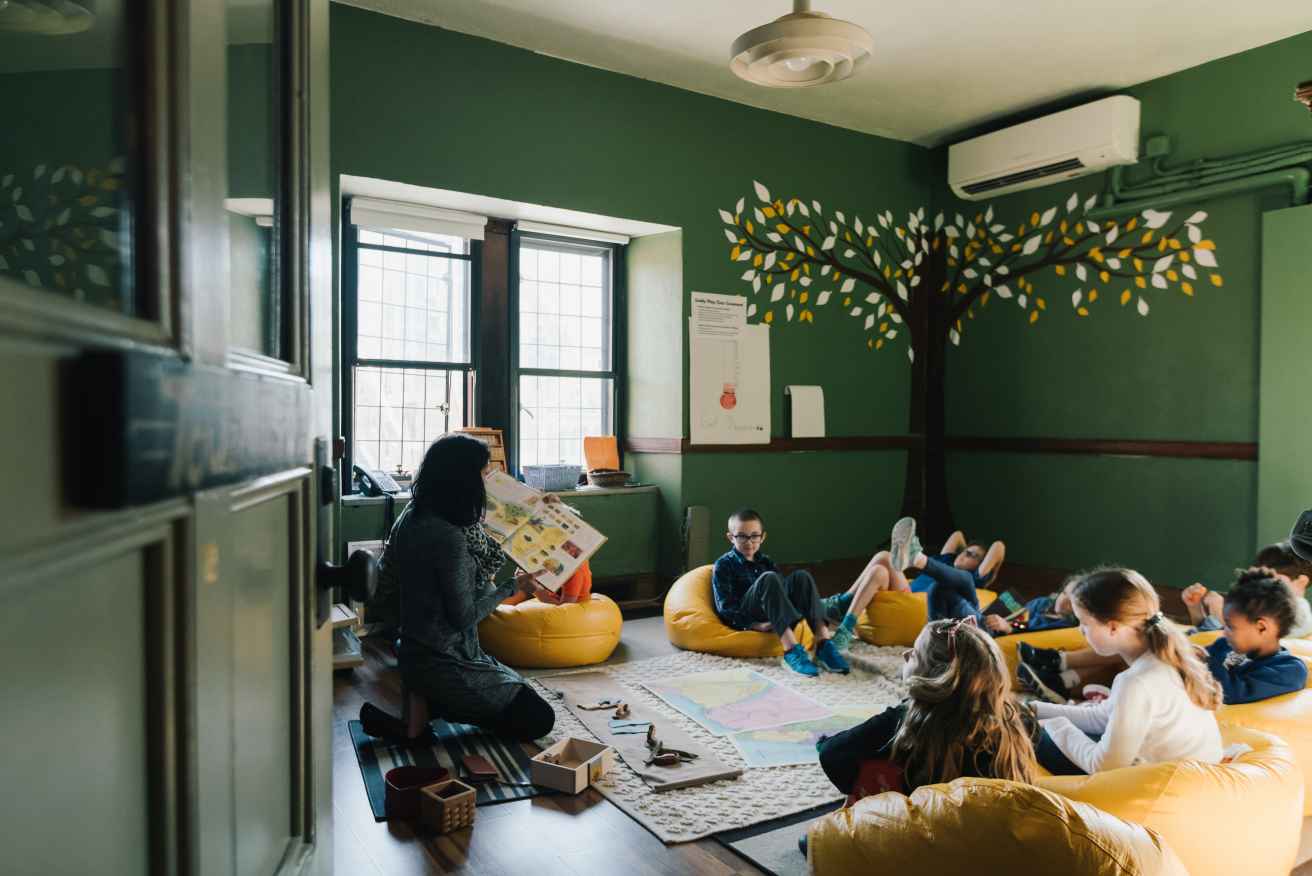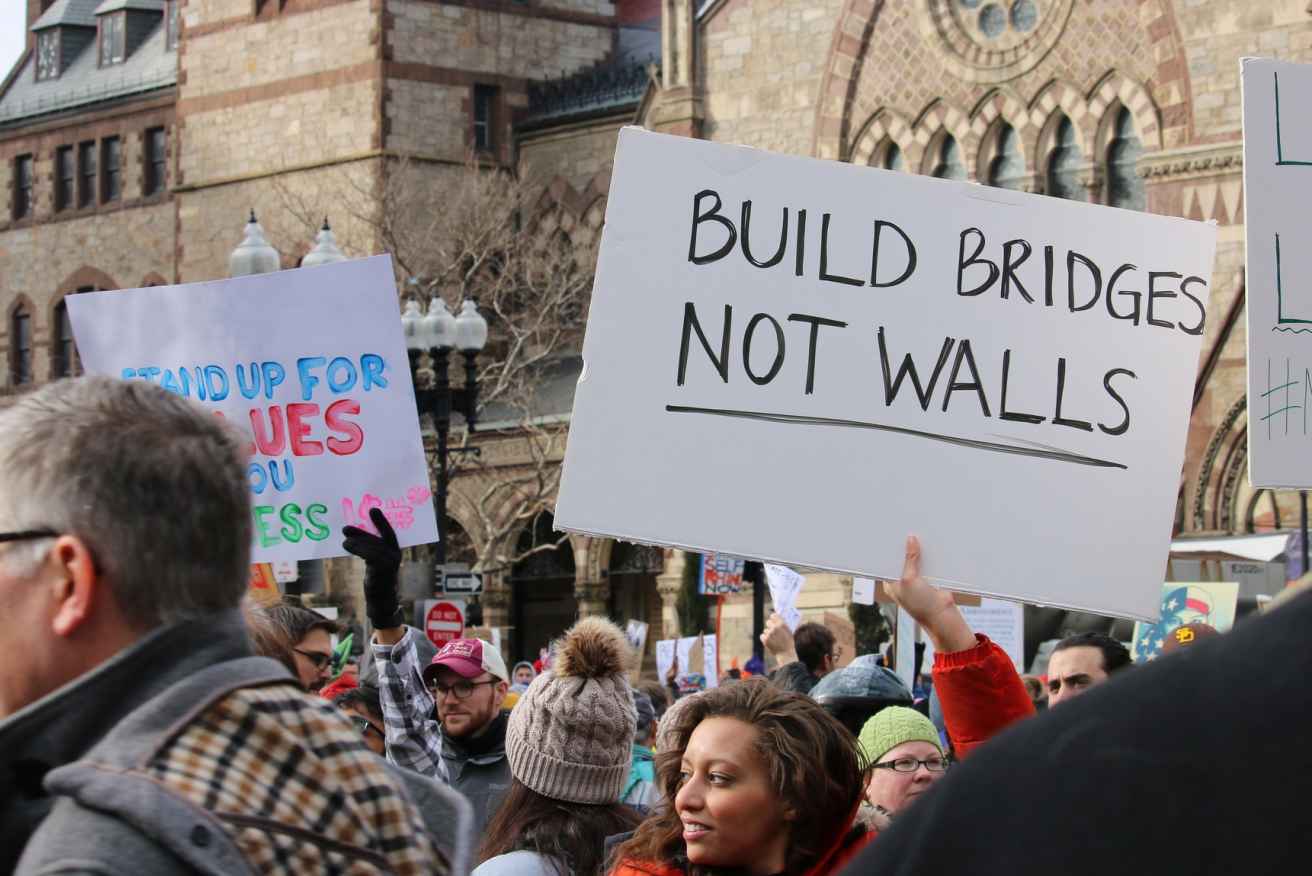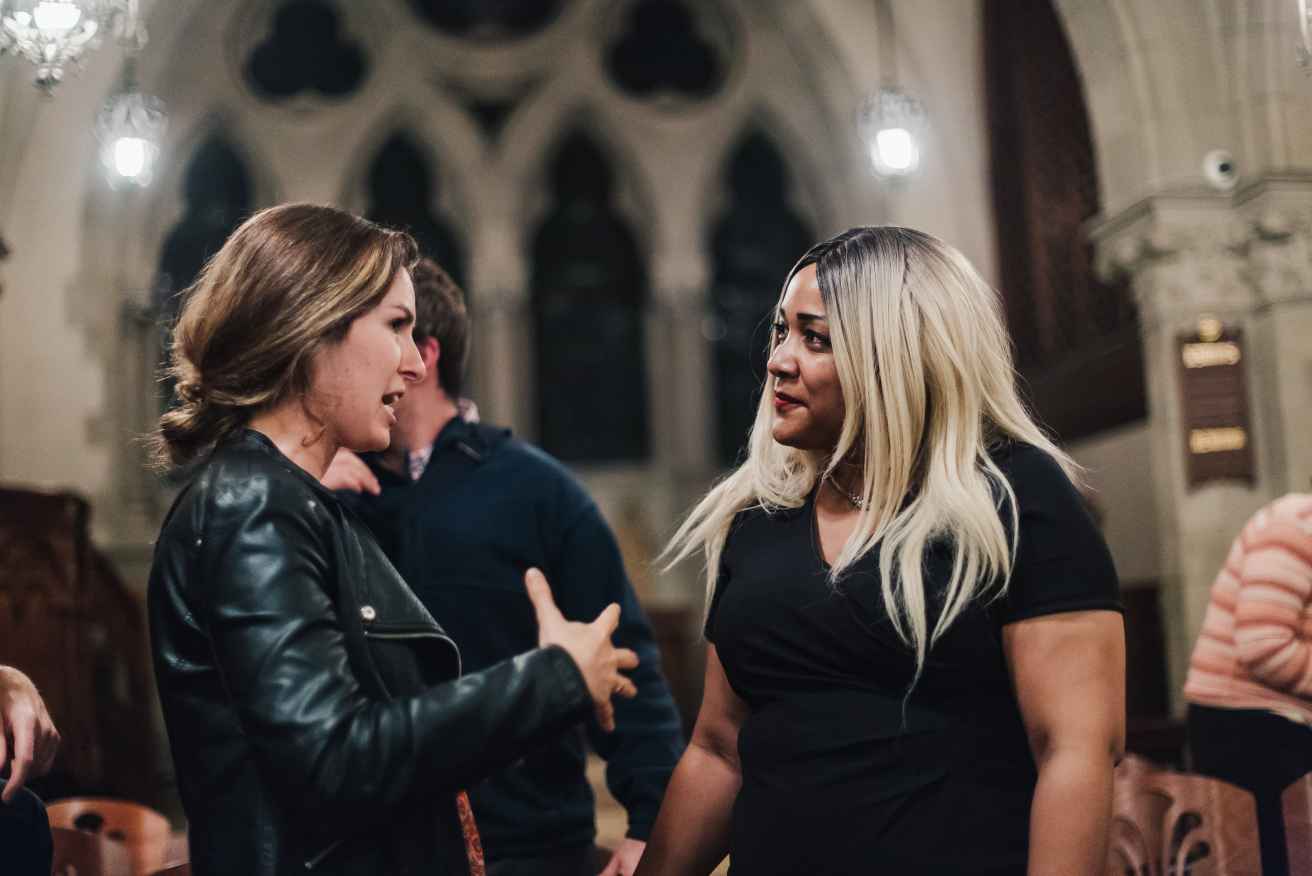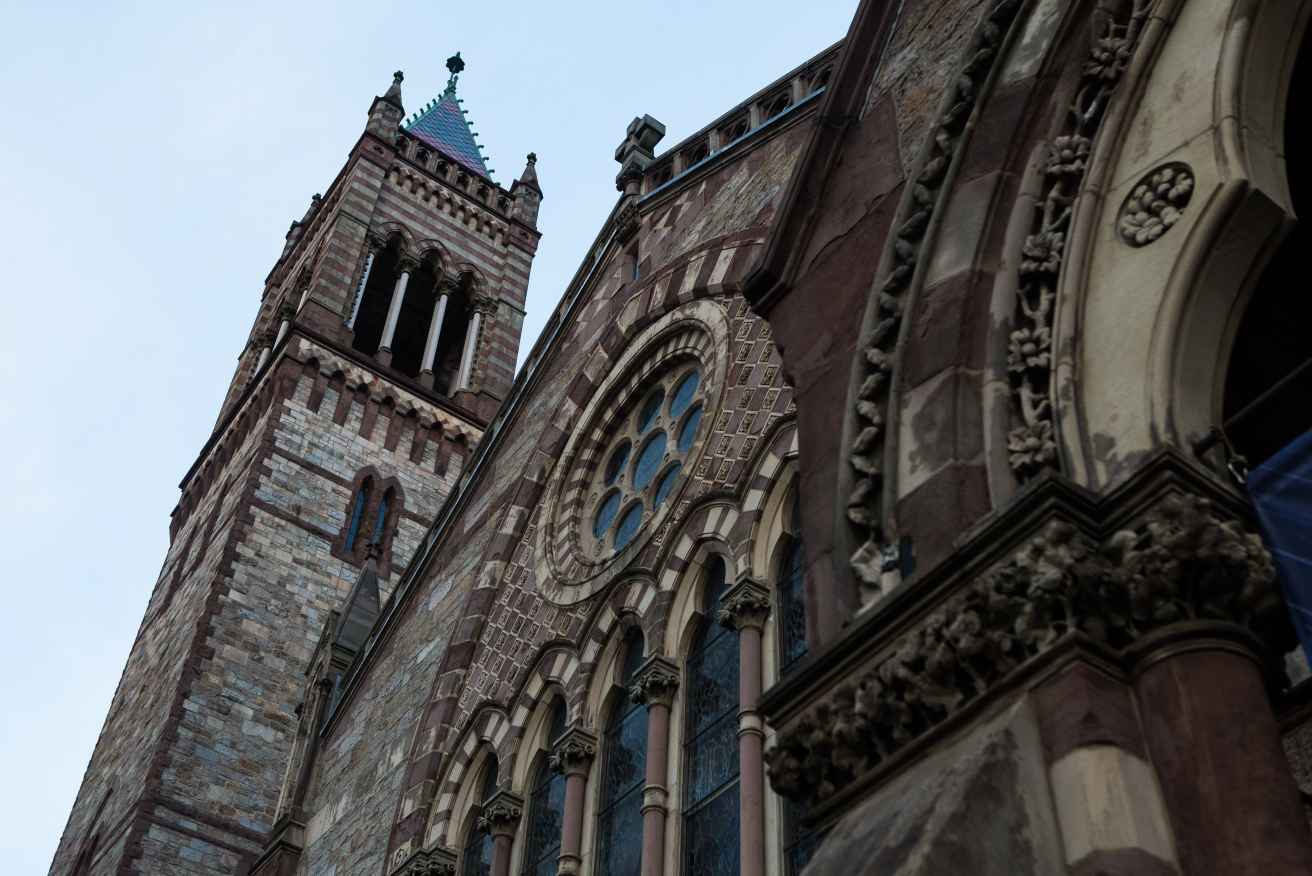Meeting House Sunday
Meeting House Sunday
A Noble Inheritance
Reading(s)
Picture this. It is July 4, 1795. A warm, sunny Saturday in Boston. Right out those doors, on Milk Street, between this Meeting House and the home of Benjamin Franklin’s youth (his home still standing in 1795) are fifteen white horses. The horses whiny and snort, scraping hoofs impatiently against the earthen lane, shifting in their harnesses, withers twitching, tails switching.
The fifteen white horses are being hitched together. Fifteen horses: one for each state of the union. Behind them, attached to the hitch, on a bed with wheels, is a time-capsule. The time-capsule is the occasion of this ceremony: for this day the time-capsule will be delivered to and installed within the cornerstone of the brand new Statehouse.
Why a new state house? Since the close of the American Revolution citizens and leaders desired a larger and more elegant structure. They ached for a structure to better represent both the new country and the optimism of a new age of independence and self-rule. For the New Statehouse, they chose a site on Beacon Hill: the former locale of John Hancock’s cow pasture.
Within the time-capsule are many items. Among them, a nail from this Meeting House. Among them: a Pine Tree shilling minted in 1652 by Old South founding member John Hull. The Pine Tree shilling of patriotic and rebellious repute. It had been minted illegally; minted in defiance of the King of England who ordered the mint closed. The Pine Tree shilling is placed in the time-capsule to symbolize the brazen assertion of a young, rag-tag colony that they will not be ruled from across the sea, that they will mint and produce their own coin of the realm.
Also in the time-capsule: a copper medal with George Washington’s likeness. George Washington – the leader who would not be king; a powerful, charismatic leader who refused to amass power for himself, who refused a third term as president.
At the stroke of noon, fusiliers in dress uniform raise their rifles and commence a thundering, smoke-billowing fifteen-gun salute. As the smoke clears, the Grand Procession, as it is called—accompanied by fusiliers and pulled by fifteen white steeds—commences.
Ah, did I tell you? The Grand Procession is led by three most distinguished men. All three are clad in bright, crisp ceremonial dress: first, the Governor, who happens also to be a member of this church: His Excellency Samuel Adams. Next Paul Revere, Grand Master of the Masonic Lodge (whose famous ride was 20 years before). And, third, Col. William Scollay (Colonel of the Boston Militia, the man after whom Scollay Square would be named), who happens to be a Deacon of this church.
The Grand Procession inches ever so slowly toward the site of the new state house – ever so slowly because there is absolutely no hurry. No hurry, because the distance is not far. No hurry, because the town means to savor this moment. No hurry at all, because it’s not every day that fifteen white steeds are hitched together and Adams, Revere and Scollay are decked out in state attire. No hurry, because it’s not every day that a time-capsule is delivered to the new state house of a young, independent nation.
In stately, measured progress the Grand Procession winds its way through the narrow streets amid cheers, salutes, hat waving, and huzzas.
Eventually, the Grand Procession clops up Beacon Hill, arriving at the site of the New Statehouse. The fifteen white horses, their backs now slippery with sweat, are reined to a halt. Muscled men carefully off-load the time-capsule from its wheeled cart. Carefully, because the eyes of Governor Adams and Colonel Scollay and Grand Master Paul Revere are on them. Carefully the men heave and lift and position the time-capsule, then slide and coax it inside the awaiting cornerstone and finally, seal it shut with flanged sheets of lead.
As the time capsule is entombed and the cornerstone sealed, another crackling fifteen-gun salute heralds the deed. This is followed by more huzzas, cheers and hat waving.
That’s how important was this building. That’s how important was this Old South Meeting House, was our Meeting House to the town of Boston and to the people of Massachusetts.
And, don’t think, not for one minute, that those planning this Grand Procession – what with the white horses, the fusiliers and gun blasts, the ceremonial clothing, the cheering crowds – don’t think that Samuel Adams and Paul Revere and William Scollay didn’t mean by their studied pageantry to evoke and conjure the Bible, in fact the very the story from the Book of Revelation just read. Don’t think for a minute that they weren’t intending a biblical suggestion: sacred ceremony, grandeur and majesty, the snorting white horses, the struggle with and defeat of evil. In the case of the book of Revelation: the evil of Babylon. In the case of Boston: the struggle against and, in the end, the defeat of tyranny, the righteous defeat of king and crown.
If you know your Bible – and Adams, Revere and Scollay (stout Puritans, all): they knew their Bibles – you know that God is no lover of kings.
This Grand Procession of July 4, 1795, commencing from this Meeting House, is Boston’s own version of the Hallelujah Chorus: a sacred celebration, reveling in the alignment of the government of earth with the government of heaven.
But that was back when it was said of the Massachusetts State House and the Old South Church, that they were the Moses and the Aaron of New England.
Let’s move forward in time, sixty-six years forward, just two-and-a-half generations later: to the year 1861. Shortly after the inauguration of Abraham Lincoln as president, Confederate forces (secessionist forces) fire upon Fort Sumter in South Carolina. The secessionists advocate for state’s rights and for the privilege, the freedom, the license to uphold slavery. The attack upon Fort Sumter threatens the very fabric of the young nation.
In response to that opening volley of what would become the Civil War – a war for the Union, a war for the US Constitution, and a war over whether some humans have a right to sell and own other humans – in response to the attack upon Fort Sumter, and at the urging of Bostonians, a patriotic event is planned. It is to be held here.
It is natural, instinctive that in response to such a crisis as now faces the Union, that the people of Boston would turn again to this Meeting House. What this Meeting House had suffered before and during the American Revolution; and what this Meeting House had achieved and given voice to – is, in 1861, still fresh in the historical memory of the town. In the spring of 1861, in the face of this new emergency, this Meeting house is looked to again: to be a rallying point, a gathering place, a fixed center in a time of national dislocation and dismay.
Preparations are made: men climb into the steeple bearing tools and lumber to hoist and secure a sturdy pole for a large American flag. This is no small undertaking: they must fasten the flag’s pole against the pull of wind and torque, secure bolts, affix stays to brace and spread the pressure, and string halyard and pulley.
And, because the inside of the Meeting House could not possibly hold the expected crowds, because the event will have to be out of doors, our forebears go to the trouble of erecting a platform for the speakers right by the front door.
And, then, to top it all off, they hire Gilmore’s Band; led by Patrick Gilmore, the Patrick Gilmore, the renowned 19th center band master, one of the most influential band conductors in American history, second only to John Philip Sousa.
(And, by the way, as an historical note: Gilmore and his entire band would, just five months later, enlist in the Civil War on the Union’s side. Sixty-eight musicians – including twenty drummers and twelve buglers – would go to war with the 24th Massachusetts Volunteer Regiment, where they would play in camps, and literally accompany the troops onto the battle field. It would later be said of them, that Gilmore’s Band incited soldiers to heroic deeds and did much to boost morale)
And so the day arrives: May 1, 1861. By high noon the whole town, and far beyond the town, is gathered: men and boys by the thousands fill and throng Washington Street. The windows of the church and of the neighboring buildings are filled with ladies. Upon the platform erected for the event are the Standing Committee of the Old South Society, along with the ministers, and the officers of the church.
Down below, right by the platform, is Gilmore’s Band. They are fitted out in splendid uniforms: all brass and plumed hats, trims, buttons, and epaulettes. They strike up a rousing rendition of Hail Columbia, the de facto national anthem for most of the 19th century. This is followed by Washington’s March.
The event is called: “Exercises at the Consecration of the Flag of the Union.” At 12 noon, George Holmer a member of the standing committee of this church, addresses the vast assembly as follows:
“We are about to throw to the breeze from yonder spire the dear old flag of our forefathers, and to consecrate it with our prayers. Where better than on this consecrated spot should the flag of the Republic be seen by all? It seems to me, gentlemen, that the stability of our government, is for the first time since its existence, actually on trial. In this great contest between right and wrong, where shall the people of Boston stand? If the great problem of man’s capacity for self-government fails here, where shall we look to see it more successfully carried out?”
At this, the flag is unfurled amid the cheering crowd while the band plays, Star Spangled Banner.
Old South Church: Allow me to ask you a question today. On this Sunday before our National Day of Thanksgiving; on this, the occasion of our 63rd annual return to this Meeting House: Why are you here today? Why come to this old relic of a building, a building 288 years old? A building we shed in 1872, as a snake sheds the old skin it has outgrown? Why come back? Why return here to offer to God our high thanksgiving?
It is meet and right between Election Day and our National Day of Thanksgiving, to pause, and in this ancient house, remember the grand struggles, the heroes and heroines, the soldiers and statesmen, the poets and patriots, the preachers and pundits that wrenched from monarchy and from papacy freedom, equality, and self-rule.
It was here, under God, and with the assistance of great men and women – men and women propelled by magnificent ideas – it was here that our forebears proved that we, flawed though humans are, could yet be trusted with self-government. It was from this house that our forebears proved to the world that a church without a bishop and a state without a king is a living possibility; that an educated populous could prove itself worthy of self-government.
Three-hundred-and-fifty years after the founding of this church, and three-hundred-and-twenty-two years after the founding of this nation we remain committed to a rare and precious and fragile thing: a republic founded on the unlimited suffrage and God-ordained equality of all people; a state, self-governed by an educated populace; the state measuring itself (not by the size of its army) but by the brilliance of its Constitution.
And, equally, we remain committed to this rare and precious and fragile thing: a church governed, not by bishop, nor by ancient creed, nor by patriarchy, but by its own peoples’ best understanding of God’s call to us in each new day.
Here is the spot where the whole marvelous enterprise began. This is the roof under which the republic’s first councils were held. Here, in this house, the air still trembles with the fiery rhetoric of Otis, with the commanding pen of Adams.
There, up yonder, Phillis Wheatley listened hard, and listened well as white men thrilled to the word liberty; white men propounding on the tyranny of the king, all the while holding (in Phillis’ phrase) “tryannic sway” over masses of enslaved people.
Up there, in the galleries, persons of African descent, both enslaved and free – all stolen from home and homeland and forced here against their will – learned (from this pulpit) the high art of rhetoric, soaring rhetoric in the service of freedom, and so challenged and forced white America to the full and true meaning of liberty for all: unlimited suffrage and equality under God.
Why here? Why bother? It is no small undertaking to pack up our music stands and coffee pots, our hand bells and our waste baskets, our cookies and our offering plates and haul them across town to this relic and vestige, when we have perfectly good Meeting House sitting empty on Boylston Street!
Here’s why: London has its palaces, its House of Parliament, and its Tower. France has its Chartres Cathedral and Paris its Arc de Triomphe. Athens, its Acropolis. But it is here, in this town and in this Meeting House, that our forebears, black and white, rich and poor, male and female, slave and free, forged from the highest ideals, the design for liberty, self-government, an educated populace, and equality.
From this house and this city would issue, bit by bit, law by law, year by year, the slow challenge to and the dismantling of patriarchy, of aristocracy, of monarchy, of white exceptionalism as fundamentally ungodly. From this house and from this city, bit by bit, year by year, war by war, law by law, would come free education to every person, and the right to vote by every adult –both in church and in state – and the right to legal defense, free speech, a free press, and so much more.
But as the years have reminded us – and as our forebears knew all too well – such liberty, such a thing as self-rule, the firm belief in the equality of all people: these are not, and never will be a once-and-for-all, over-and-done. We humans are sinners. We adore power. We crave power.
We are liable to amass power. We are tribal and we can be brutal. Tyranny is never wholly defeated.
Tyranny is like the rats and cock roaches of Boston. It scuttles in through the smallest nooks and crannies, taking advantage of any tiny fissure or crevice. Tyranny guffaws and sneers at the proposition that God intended all to be free and equal.
Today, across the earth, the forces of totalitarianism, of nationalisms, fascism, Nazism – forces that privilege the few over many – are threatening democracies. And they always will.
To be on guard against tyranny – to be vigilant in the hard work of Democracy – requires our daily attentions, the constant vigilance of all the people.
Such is today the purpose of this ancient house, now a museum. It is the classroom of our Republic. Every day it teaches to school children the lessons of self-government, the power of an educated populace, the purpose of the rule of law, the efficacy of argument and debate, the necessity of wide participation in the wheels and gears of government.
So why do we come? Why make this annual pilgrimage? We come here to wonder at the heroes and heroines of the past. To give God thanks for them. To learn from them. To be reminded of just how much they suffered, at what cost was this Republic won, and at what cost it is held.
Each year on this Sunday before Thanksgiving, we undertake our own little Grand Procession: from our new facility over yonder on Boylston Street to this old Puritan Meeting House, here to remember that for which our forebears fought and that for which we continue to fight: a better, nearer alignment of the government of earth with the government of heaven. Amen.
Preaching Text: Revelation 19:11-16 - I saw heaven opened, and behold, a white horse! The one sitting on it is called Faithful and True, and in righteousness he judges and makes war. His eyes are like a flame of fire, and on his head are many diadems…and the name by which he is called is The Word of God. And the armies of heaven, arrayed in fine linen were following him on white horses. From his mouth comes a sharp sword with which to strike down the nations, and he will rule them with a rod of iron. He will tread the winepress of the fury of the wrath of God the Almighty. On his robe and on his thigh he has a name written, King of kings and Lord of lords.
Sources: Exercises at a Consecration of the Flag of the Union, by the Old South Society, May 1, 1861: Boston: printed by Alfred Mudge & Son, 34 School Street: 1861. (includes the texts of the prayers and speeches)
The Old South Meeting House. An address by Wendell Philips, June 14, 1876 (Old South Leaflets, vol. VII, No. 183)

